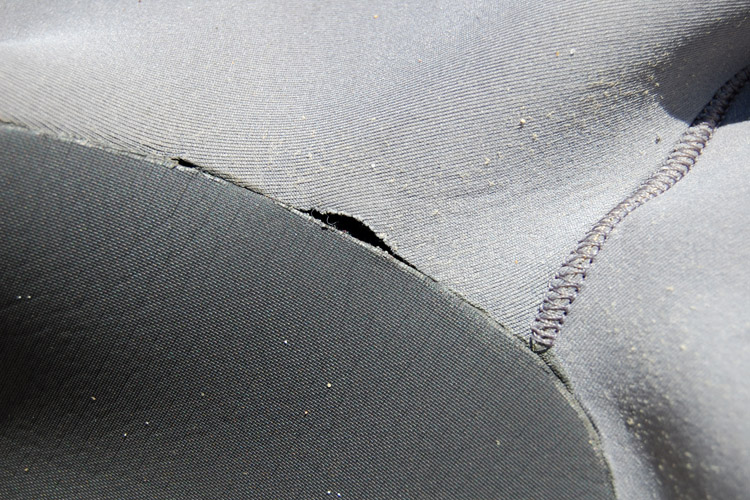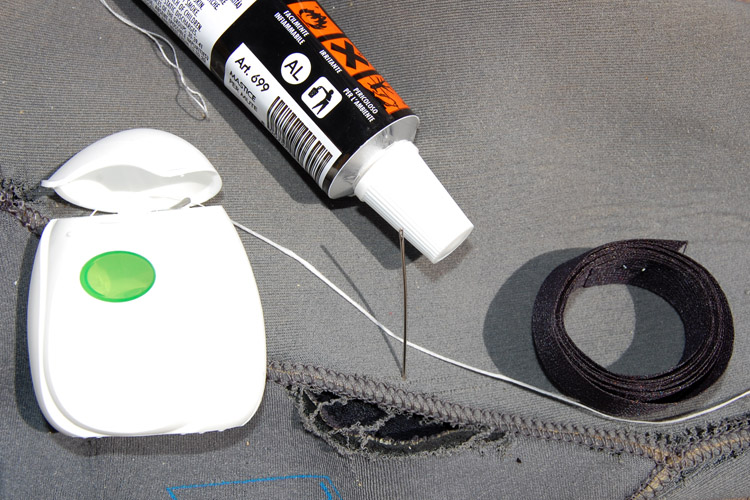You can easily make your wetsuit last longer. Seawater, sun, urine, and fingernails are the worst enemies of your favorite wetsuit.
A regular surfer hitting the waves 100 times a year may be forced to replace his wetsuit every 24 months. You don't want that.
With time, stitches will lose their strength and open, but that doesn't mean you need to buy a new wetsuit.
A proper sew and stitch job will extend the lifetime of your second skin.
Make sure you're attacking those rips and tears immediately after detecting the problem.
The most common wetsuit tears occur in the neoprene and the rubber. For both cases, there are simple solutions. In the first case, you'll need to re-attach the neoprene panels.
You'll only need wetsuit cement, glue-on seam tape, floss, and a needle.
Don't forget that stitching punches tiny holes in the neoprene, which will cause small leaks.
You'll need to sew a blind stitch in your wetsuit to counteract this issue.

Wetsuit Repair 101
Alternatively, consider the flatlock stitch or single-needle stitch. A torn seam repair is quick and easy:
- Apply glue to both edges and allow it to dry for 10 minutes;
- Apply a second layer and allow it to cure for 2 minutes;
- Lay the wetsuit on a flat surface and push the seams together evenly;
- Sew a blind stitch with dental floss. It only penetrates about 25 percent into the fabric of the neoprene;
- Add glue-on seam tape to the inside of the wetsuit;
- Let it dry for 8 hours;
Fixing Rubber Issues
If you've damaged the rubber, buy wetsuit cement, floss, and a needle. Here's what you should do:
- Apply the neoprene cement to both sides of the seam;
- Add the first coat and wait 5 minutes;
- Add a second coat and wait 10 minutes;
- Press both sides firmly together;
- Thread the floss through the needle;
- Carefully sew the damaged area. Avoid tearing the rubber;
- Apply one last neoprene cement layer over the sewn area for extra strength;
- Let it dry for 8 hours;
Discover the best wetsuits in the world.
